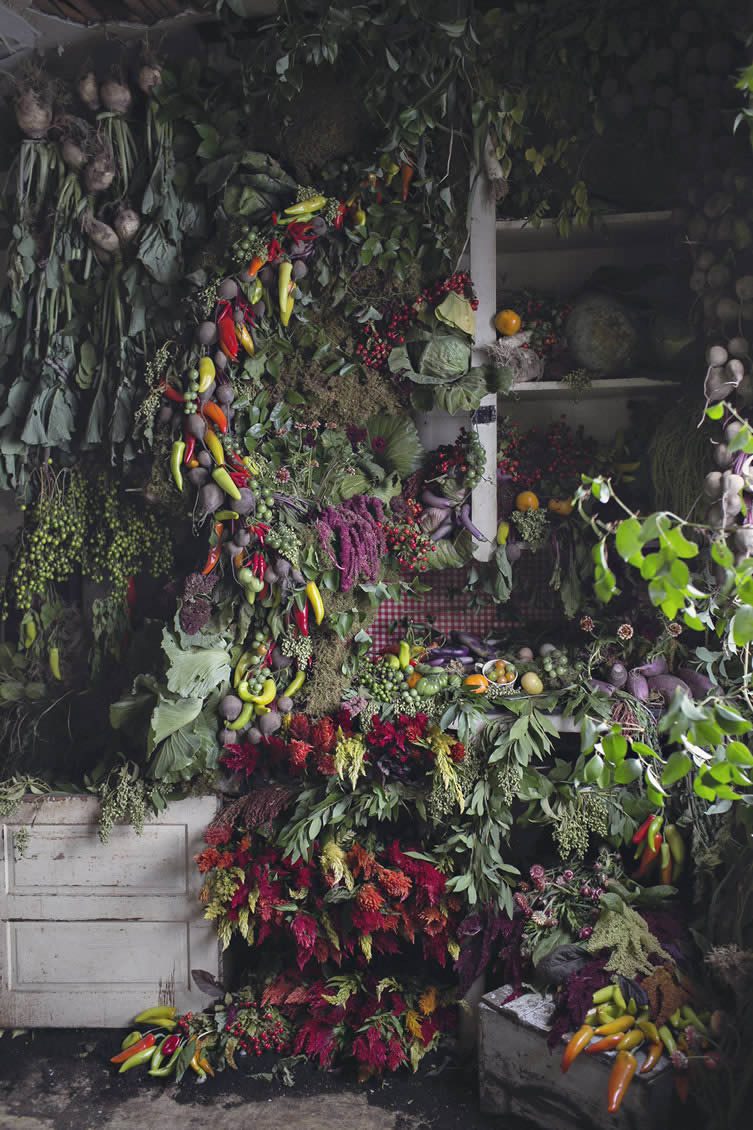‘I don’t know. They grow, they bloom, they fade.’ Says Antwerp-based florist Mark Colle of his floral friends. ‘You can’t hold on to them forever [although pioneers like Eternity Rose are keen to defy that notion]. Fashion is like that too in a way—it comes and it goes. They are symbolic for richness, romance. They capture people because of their smell, their appearance. They enhance emotion, create emotion even. Just like fashion does.’
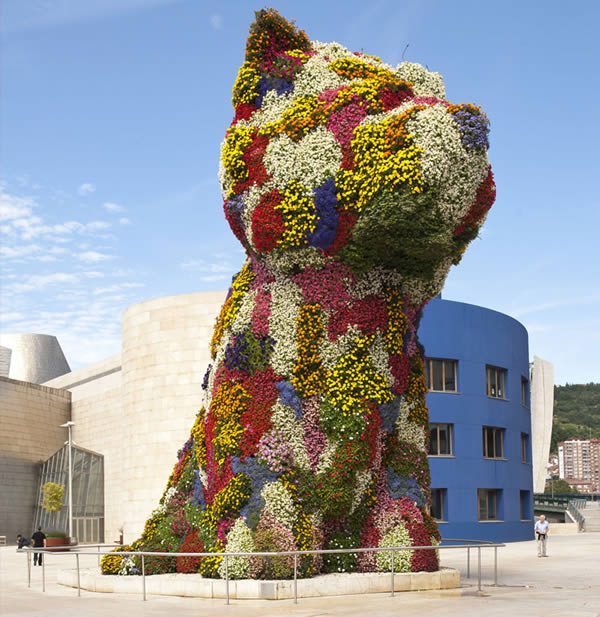
Jeff Koons, Puppy
As is the case in the fashion word, the number of artists working with flowers is blossoming (sorry)—from melancholic floral experiments to the avant-garde, flora as an artistic medium is an age-old pursuit, yet one on a continual ascendancy. Jeff Koons‘s 1992 Puppy—a behemoth West Highland terrier standing guard outside Bilbao’s Guggenheim Museum—might be contemporary art’s most famous foray into flora (thanks to a combination of bedding plants and flowers, one which continues to grow to this very day), but the primal joy it brings to the masses who witness it for the first time is one increasingly-replicated in the creative industries. The reproductive process of plants is hot right now.
Art director and still life artist Sonia Rentsch combines a keen eye for detail with a talent for the idiosyncratic. Her Harm Less series saw her construct everyday weapons—guns; bullets; and grenades—from natural materials and organic objects like leaves, flowers, roses and stems. Rentsch’s branding work for Australian vegan nail polish brand Kester Black made use of single flowers that complimented the colours of the polish; at the same time highlighting the cruelty-free ethos of the company.
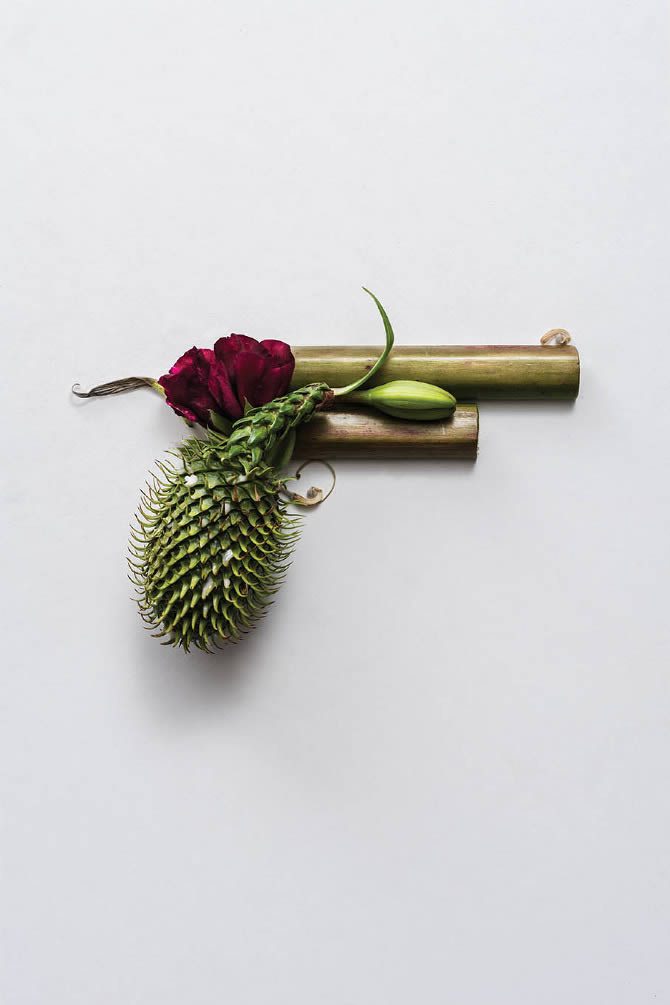
© Sonia Rentsch
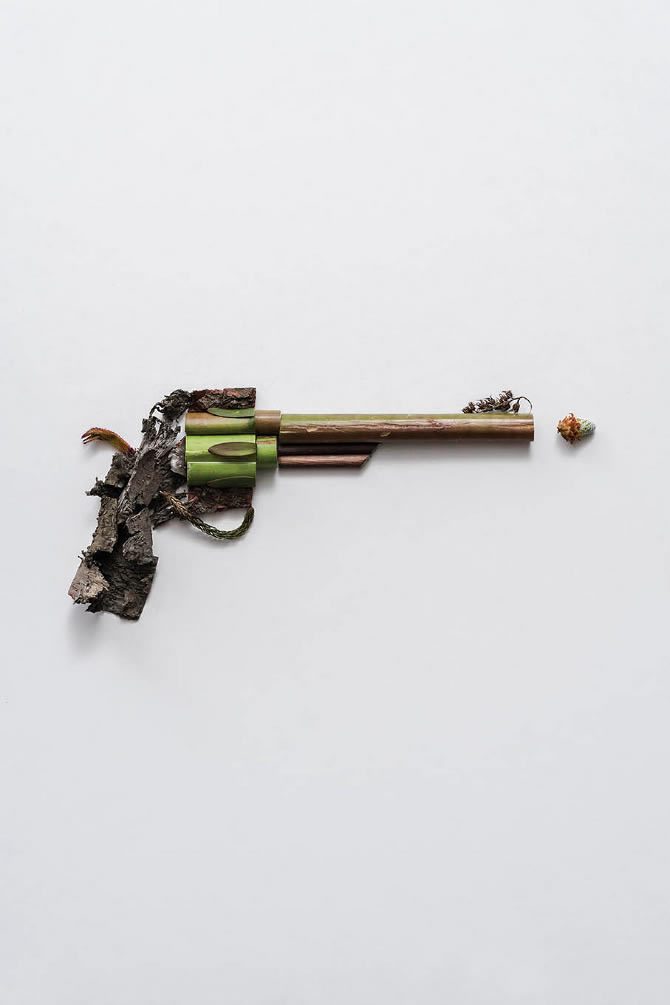
British contemporary artist Rebecca Louise Law, a sixth-generation gardener, produces large scale works that demonstrate the lifecycle of flora. Consisting of flowers in their thousands, her site-specific sculptures are frequently found hanging precariously from ceilings; affording Law’s work a sense of suspended motion and otherworldly effect. Naturally beautiful, and blessed with an infinite colour palate, the artist goes to great lengths to work with the flowers in their natural fresh or dried states; when put together in magnificent multiples, they demand onlookers to stand and stare in awe.
Aforementioned fashion florist Mark Colle has commanded as much attention as the runway models at the fashion shows he beautifies historically—installing peonies; goldenrod; dahlias; carnations; delphiniums and a plethora of roses, for example, on the walls of five rooms in a Parisian hotel for Dior’s AW 2012 couture show. The owner of exquisite flower shop Baltimore Bloemen, Colle brings the outdoors inside, creating a garden feel in feminine and romantic settings.
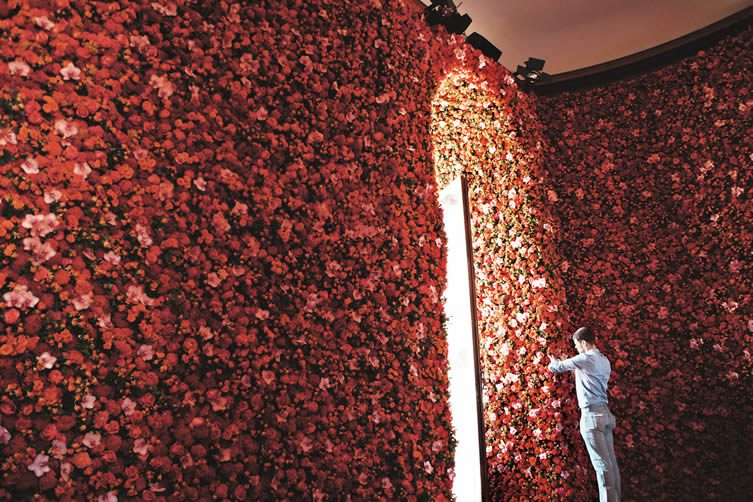
Raf Simons for Dior was unveiled in 2012, with five rooms of a Parisian town house
lined with tapestries of some million blooms designed by Mark Colle. Courtesy, Dior
Staying with fashion, British photographer Tim Walker also captivates his audience through the use of flowers—his 2008 publication, Pictures, taking its readers deep inside his world of glamour and adventure; showcasing shoots that have taken place in forests and with exceptional amounts of flowers … Lilac Room, with American model and makeup artist Guinevere Van Seenus—who romps in a room filled with fifty buckets of lush lilacs—a prime example.
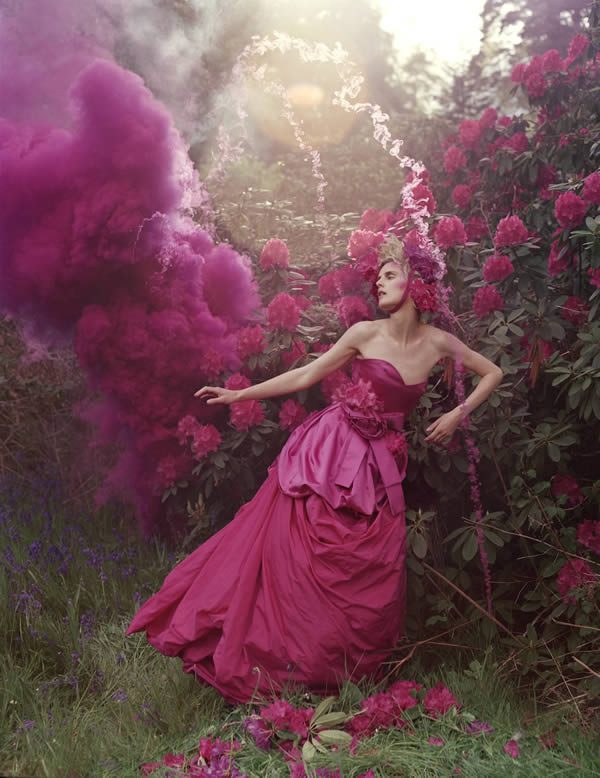
© Tim Walker
Though we’re used to decorating our interior spaces with flora living and freshly-culled, an entire apartment block in the Kongens Nytorv area of Copenhagen has a living façade; a wall of colourful flowers fitting the fresh-air freedom the Scandinavian city inspires. It sure beats buying a greenhouse for city living. Down in Sydney, French architect Jean Nouvel (along with botanist Patrick Blanc) has taken that floral intervention of architecture to its nth degree at One Central Park, decorating two residential towers with over 35 species of greenery; using plant life and redirected sunshine to improve the quality of high rise living, and confirming the project as one of the most impressive vertical gardens in existence.
Detroit—better known for its ruin porn credentials than natural beauty—is home to Flower House; a project that brought together florists from Michigan and across the United States to prettify one of the city’s countless abandoned homes. A full-scale floral takeover, the installation was constructed to fund responsible demolition of the crumbling property; ensuring the land could eventually be re-purposed as a flower farm.
Far from go-to tools to elegantly-embellish design projects, flowers have grown into the cracks that exist between design and fine art; fashion; architecture; and each and every form of creative expression. With the natural world under greater threat than ever, what better time to embrace the world of flora? Budding designer, or blossoming art talent—your time is now.
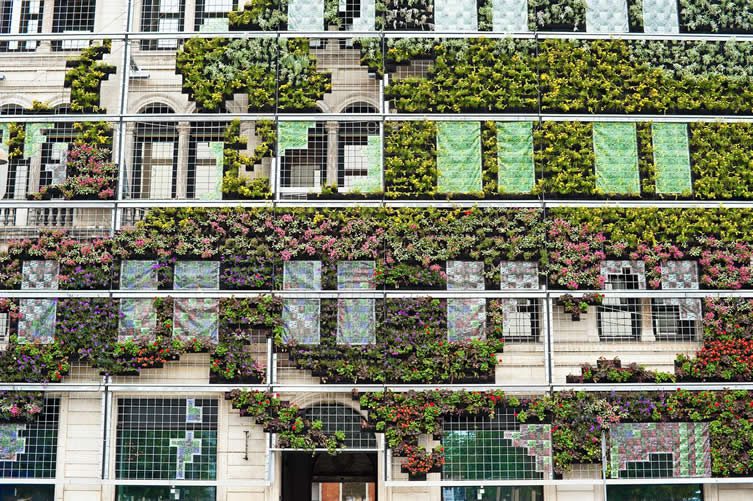
Green wall in Copenhagen’s Kongens Nytorv, © National Geographic
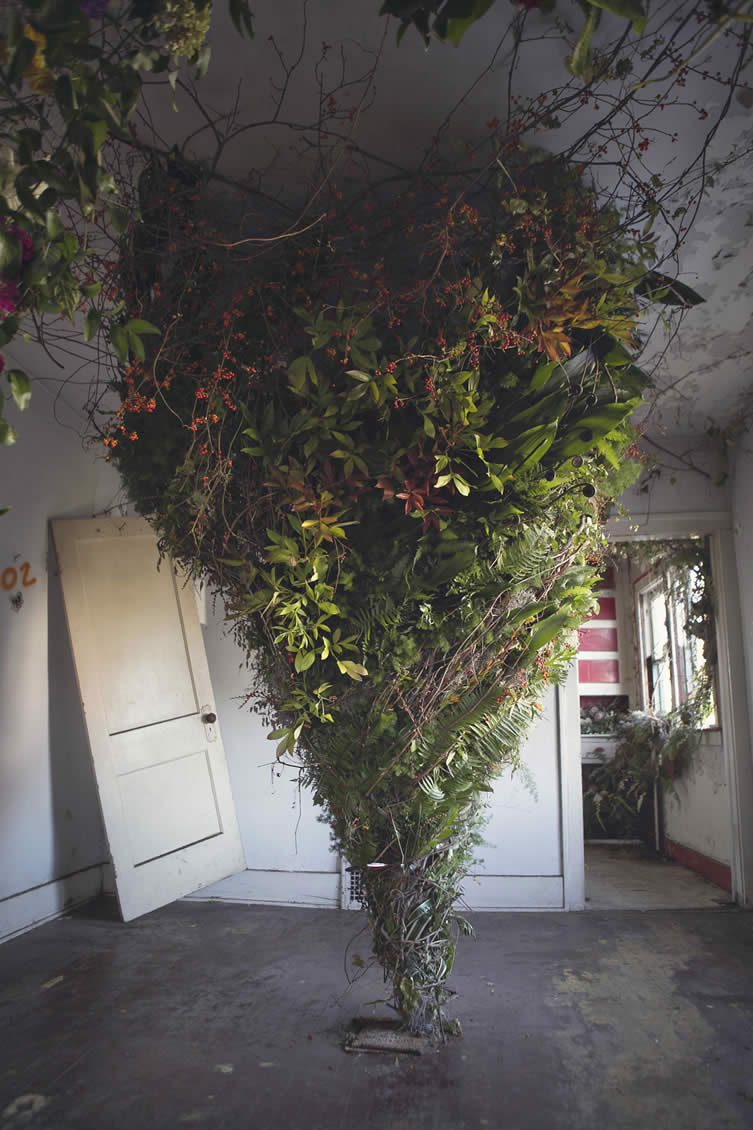
Flower House, Detroit
